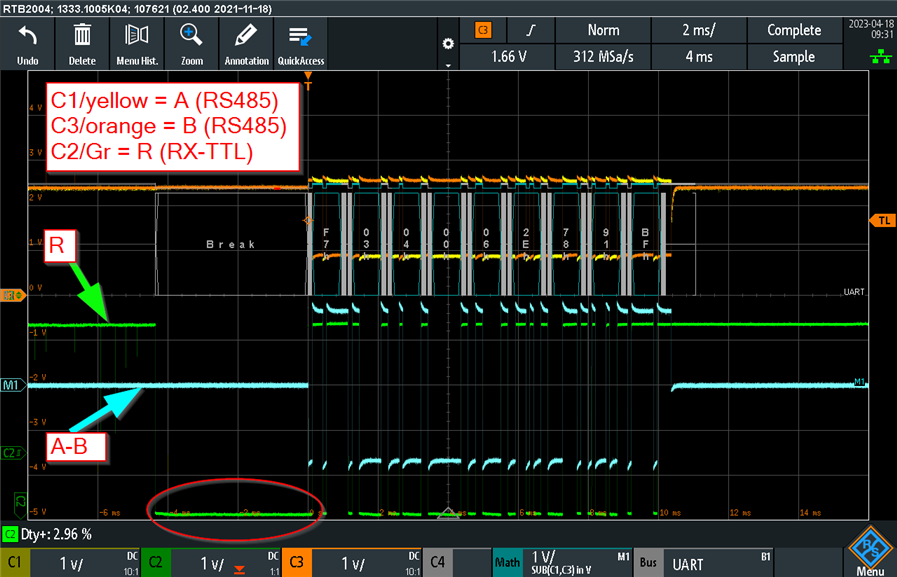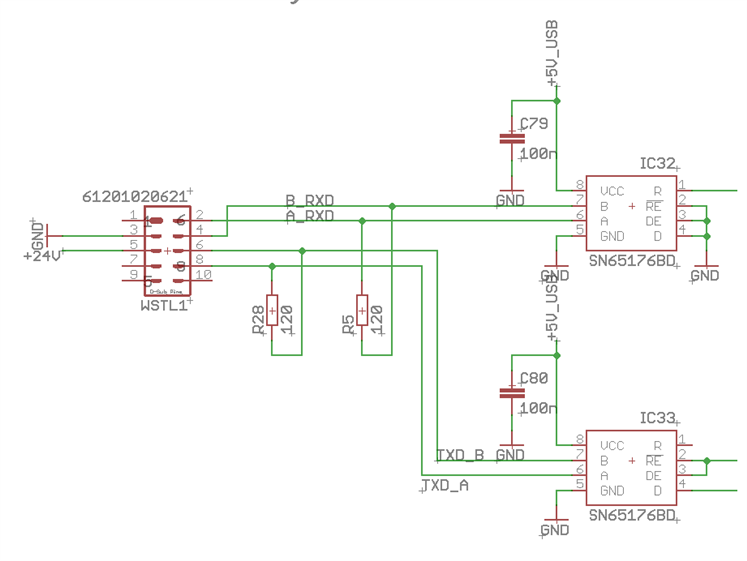Other Parts Discussed in Thread: THVD1520
Dear all,
I'm observing a communication error when receiving from a RS485 line with transceiver SN65176. This issue occurs (so far) on a single board out of 200.
Just before the data transfer starts, the SN65176 part sends the R pin (RX output) low. The receiving end sees a "break" or 0x00 byte which leads to data corruption.
This scope shot shows the relevant signals when the issue occurs:

The RS485 signals A and B are on channel 1 and 3 (yellow and orange lines, respectively).
The R signal is on channel 2 (green line) and being decoded (white lines and text).
The differential Signal V_A-B is on channel Math1 (cyan line).
The data is correct, however, the leading "Break" is adding a bogus data byte which leads to a communication error.
I already replaced the transceiver. This did not help.
Why is R going low although V_A-B does not change. I don't understand this.
Please advise.
Thanks.
Daniel



